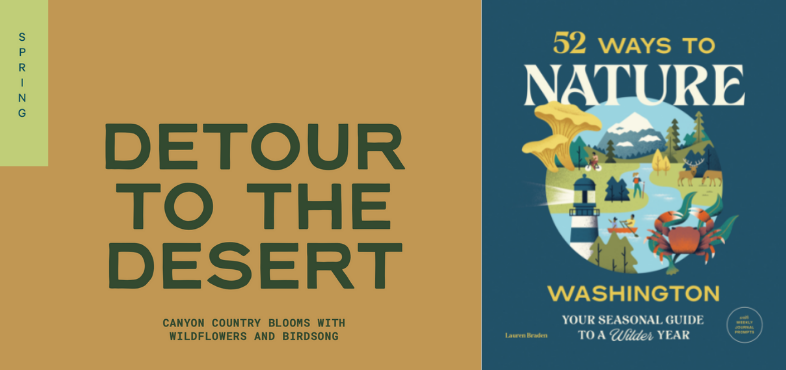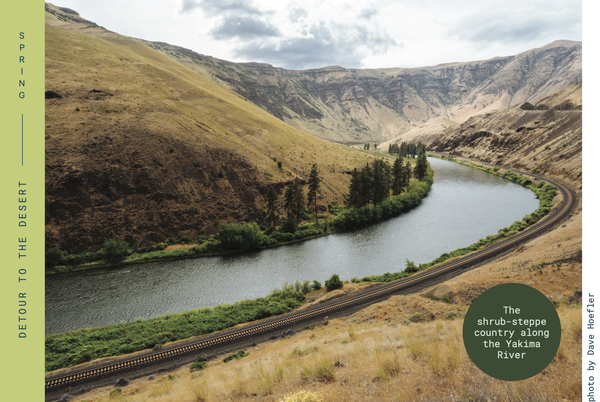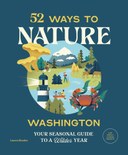
Washington has no shortage of possible adventures waiting outside your door, and author Lauren Braden has compiled the best ones in her new book (coming June 2022), 52 Ways to Nature Washington: Your Seasonal Guide to a Wilder Year. We're giving an early sneak peek at one of the many activities included in the book, just in time for spring! Below is an excerpt from the spring section: "Detour to the Desert." Enjoy!
CASCADIA IS A LAND of contrasts, none more stark than when you venture from the misty emerald forests of Western Washington to the state’s arid eastern half. In spring the vast Columbia Plateau is warmer, drier, and, unlike most trails in the Cascades and Olympics, not under several inches of snow. Colorful in places and austere in others, this landscape of basalt canyons, dry coulees, and sagebrush is crisscrossed with lightly treaded trails that provide relief for spring fever in the form of warmth and sunshine.
If you hear “desert” and think barren, you’re in for a nice surprise—our shrub-steppe habitat is full of life, though many plant and wildlife species here face threats of habitat fragmentation and degradation. About half the fragile shrub-steppe ecosystem that once carpeted Eastern Washington is gone. On that which remains you may encounter elk, bighorn sheep, coyotes, sagebrush lizards, jackrabbits, rattlesnakes, and an array of migratory songbirds and raptors. Some birds are strongly associated with sagebrush and you’ll only find them in sage habitat, like sage-grouse (who only lay their eggs under sagebrush), Sagebrush Sparrow, Brewer’s Sparrow, and Sage Thrasher. Wildflowers put on a vibrant show each spring. Look for desert specialties like the bright fuchsia blossoms atop spiky hedgehog cactus, arrowleaf balsamroot, sagebrush violets, clumps of phlox, and bluebells.

WHERE TO GO
L. T. MURRAY STATE WILDLIFE RECREATION AREA
Umtanum Canyon, SR 821, 13 miles south of Ellensburg, wdfw.wa.gov, (360) 902-2515 PARKING FEE
Step into a riparian oasis in the heart of Washington’s dry sagebrush steppe country. The trail begins at the Yakima River and gently meanders up the lush basalt canyon alongside Umtanum Creek, crossing over it and back again in a few places.
Spring hikers are serenaded by a chorus of migratory birdsong, from bluebirds, orioles, and many species of warblers. Lewis’s Woodpeckers nest here, their flapping crow-like flight notably different from the undulating flight of other woodpeckers. Bighorn sheep and deer roam the sloped canyon walls, and a Prairie Falcon pair often nests here. Watch for the sight or sound of a rattlesnake; hiking with a walking stick reduces the chances of surprising one. Desert wildflowers color the canyon bottom, and sapphire-blue sky stretches for miles over-head. The trail becomes overgrown at three miles, a good place to turn around. There are nice, flat campsites every mile or so along the trail.
Organized by season, 52 Ways to Nature: Washington features immersive activities to keep you engaged with nature throughout the year. This twist on a Northwest guidebook offers ideas to get you outdoors and encourages you to keep track of those experiences through journal notes.
 Mountaineers Books
Mountaineers Books
